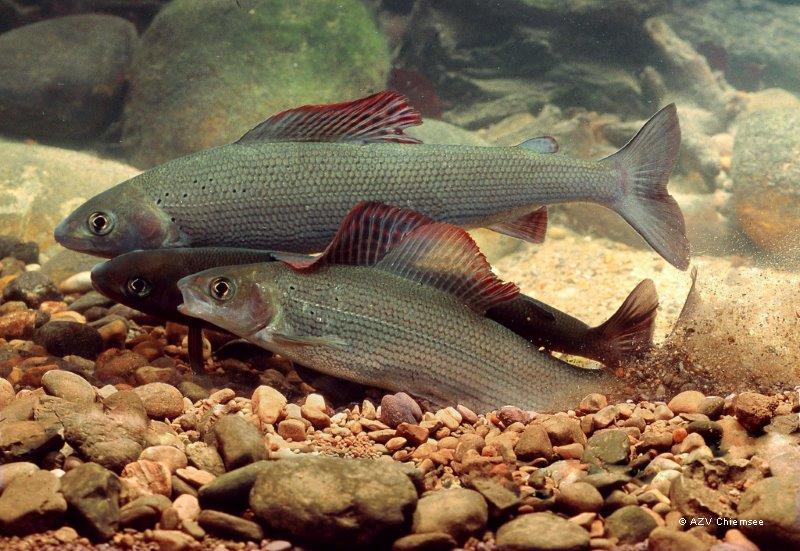
The upper Lahn with ist gravel banks is ecologically designated as a „grayling region“.
The grayling, as an indicator species, gives its name to this ecosystem but is becoming increasingly difficult to find. Another typical fish species of this region, recognizable by ist knobby nose, is the common nase, which disappeared from the upper Lahn in the 1960s. Repeated attempts to restore the common nase population have been unsuccessful.
Both the grayling and the common nase spawn in gravel beds where their eggs also mature into larvae. In this phase the young fish are very sensitive to sedimentation and pollution of their habitat. Also later in the fry and adult stages, both species have particular requirements regarding living conditions.
Hydrological engineering has removed the natural structures and installed barriers in the upper Lahn, inhibiting passibility along the waterway. Likewise the increased abundance of predatory cormorants threatens the populations of both fish species.
As part of the LIFE Project, from 2017 to 2021, comprehensive studies were conducted in order to assess the difficulties facing the target fish species in the upper Lahn. Chemical and physical measurements of gravel beds provide perspective on the living conditions for eggs, larvae and thus assign each potential spawning ground a unique measure of quality.
The habitat of young fish that emerge from the nooks and crannies of the riverbed have been examined in order to identify paucity of suitable habitat for fish in early stages of life. Finally, the impact of the cormorant on fish stocks during winter months were systemically examined. Numerous structural rehabilitation measures were carried out in the Lahn between Biedenkopf and Marburg to improve the situation for fish in that stretch of the river.
For this purpose, bank stabilization was removed in appropriate places in order for the river to naturally develop by itself. Flattening of riverbanks for young fishes was done. The construction of deepenings in the water bottom allow cover and use as winter habitation also for large fishes.
To reestablish the common nase, genetically suitable nase populations from the region were sought and eventually found in the middle section of the Lahn. There, parent fish were caught and their spawn were incubated in a fish hatchery. These offspring were released at suitable locations in the project area. Several times a year, sample catches were carried out. These showed that the stocked nase were already reproducing. The grayling population was also supported by stocking of suitable genetic specimens.
Other fish species should also benefit from the renaturation measures in the upper Lahn. If measures to mitigate stressful factors are continued, it is hoped that stocking to support fish populations will no longer be necessary.
